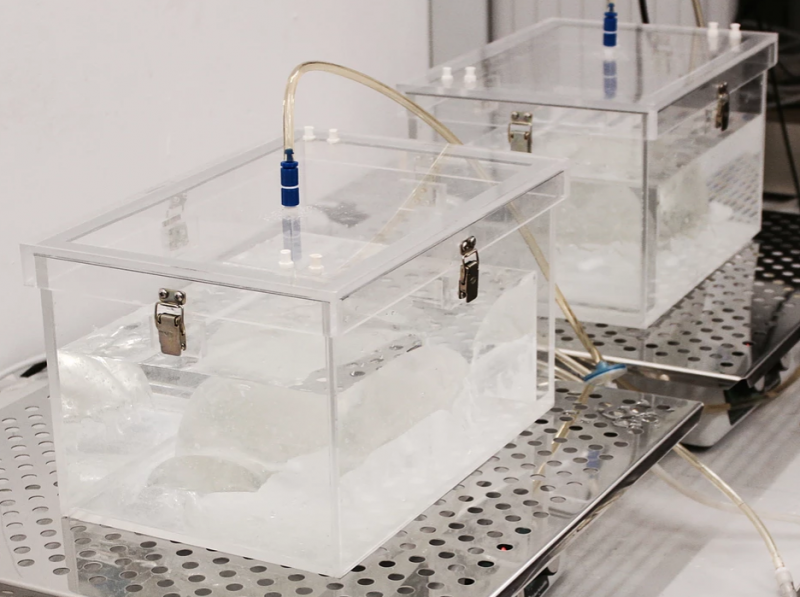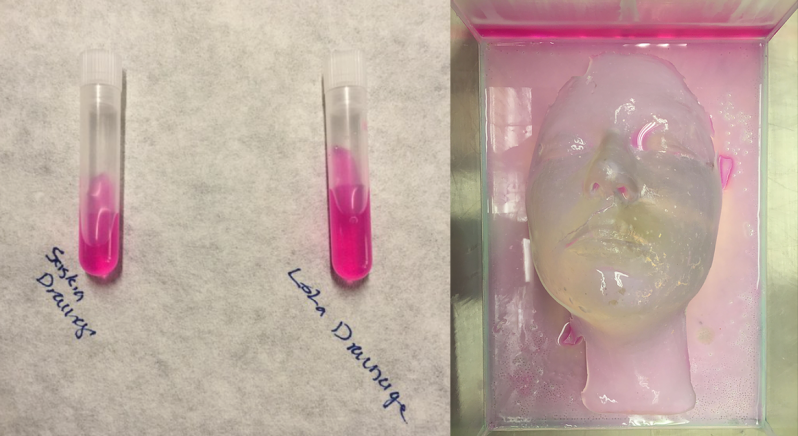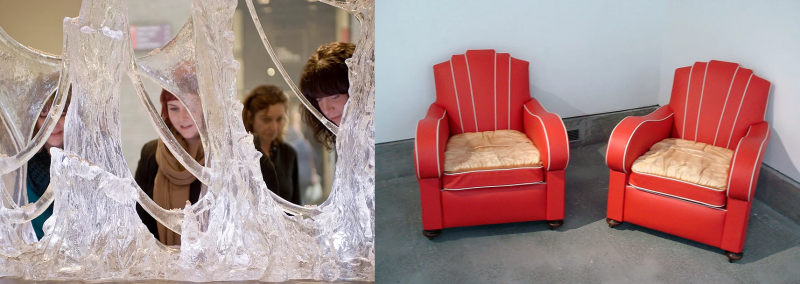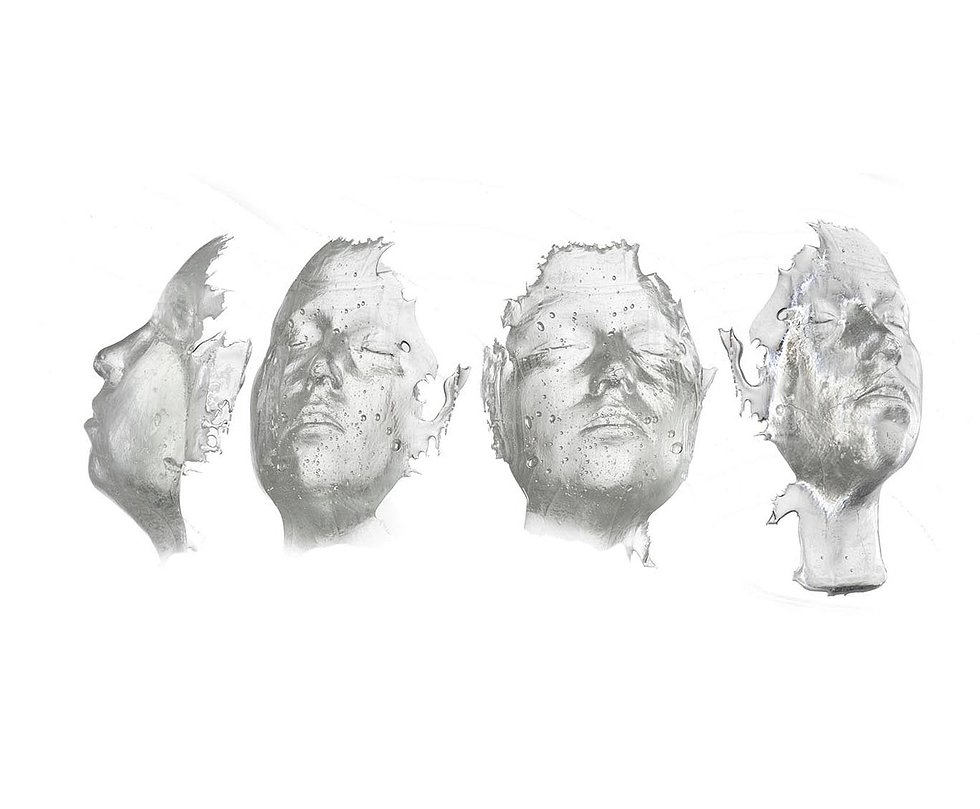Gina Czarnecki raises questions about identity and ownership of our own bodies through living artwork that once used to form part of other human beings.
Gina Czarnecki, based in London, has used her own daughters’ cells to create unique pieces of art. In her project ‘Heirloom‘, recently exhibited at Medical Museion Copenhagen and created in collaboration with John Hunt from the University of Liverpool, the bioartist presented glass casts of the girls’ faces seeded with their skin cells.
Kept and fed in bioreactors, the cells fill out the casts as they grow over time. While visitors contemplate the pieces, thin layers of human skin grow on the three-dimensional, scientifically-accurate portraits, bringing them to life. The pieces, constantly changing and evolving, will be on tour until 2018.

Czarnecki invites visitors to imagine a not-so-far-away future when “we will regularly add 3D body scans to bio-banks, along with samples of our cells. Then, when needed, 3D structures could be regrown, a kind of transplant from our past bodies.”
These unsettling pieces also intend to highlight ethical concerns regarding the ownership of bodily materials. Czarnecki harvested the cells from her daughters with simple cheek swabs; as their mother, she consented for them. As usual in sample donation for research, the girls gave away their ownership.
So what happens if they change their minds about publicly displaying their cells? Unless the researchers are willing to set up a way to do it, they cannot longer participate in any decisions regarding their own biological material.

This message echoes that of other bioartists like Tina Gorjanc, who designed whole fashion line made out of lab-grown skin from the famous designer Alexander McQueen to draw attention to the lack of legal protection of biological information.
Heirloom also raises questions about identity. Unlike most portraits, these pieces are made from the same material as the original models. However, the pieces cannot reveal character or personality. Where does identity lie then? It must be somewhere between ourselves and our cells.
Previous works by Gina Czarnecki explores similar themes. In ‘Palaces‘, she built a 3-meter high sculpture embedded with milk teeth donated by hundreds of children across the UK. For ‘Canope‘, the artist built armchairs filled with human fat, creating a seat that softens with heat and molds to the person sitting.

Some of these exhibitions can make visitors feel uncomfortable, examining our relationship with our own bodies, raising questions on what identity means and highlighting the current shortcomings regarding the ownership of human biological materials. If this thought-provoking artwork appeals to you, make sure to check out Heirloom in upcoming exhibitions.
All image credits to Gina Czarnecki





